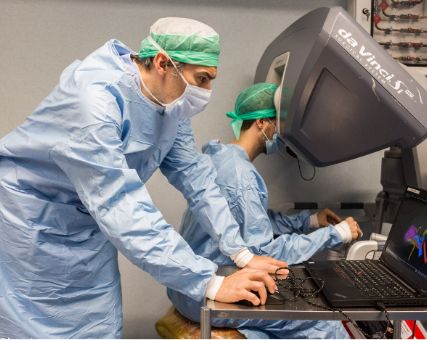RHU Digital Urology 3D programme has several Work Packages, each one dedicated to a specific objective of the project. Work Package 1 (WP1) is dedicated to the development and evaluation of new virtual 3D solutions for image-guided surgery, with a particular focus on robot-assisted partial nephrectomy. By integrating the latest virtual and augmented reality technologies, WP1 aims to guide, optimise, and secure surgical procedures using 3D software and patient-specific anatomical models.
–

The first phase involves the assessment of the 3D Image-Guided Robotic-Assisted Partial Nephrectomy (3D-IGRAPN) technique, developed by Prof. Jean-Christophe Bernhard and his team at Bordeaux University Hospital Centre. This led to the multicentre randomised clinical study ACCURATE (UroCCR No. 99), launched in 2023 and coordinated by Grenoble University Hospital Centre. The study is being conducted nationwide across France and will run until 2027.
This evaluation targets kidney tumours of moderate to high complexity, with the aim of comparing the efficacy, safety, and renal function preservation of surgeries performed with and without the 3D-IGRAPN technique.
In the second phase, the validated 3D-IGRAPN technique will be enhanced using a dedicated augmented reality software and algorithm, developed and tested in pre-clinical studies.
This tool, specifically designed for robotic laparoscopic kidney surgery, will enable the overlay of the patient’s 3D model—previously generated with Fujifilm’s Synapse 3D software—directly onto the surgical view. The tumour and surrounding anatomical structures will be clearly visualised to help guide and optimise the procedure.
The final phase involves a monocentric study—UroCCR No. 112— conducted at Bordeaux University Hospital Centre. This study will include 40 patients and aims to evaluate the accuracy, reliability, and performance of the augmented reality tool, while also defining its optimal use and measuring its impact on surgical outcomes.